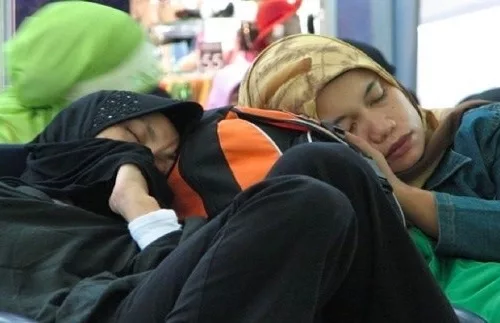Dengue fever, often referred to as “tropical flu,” is a significant global health concern. This viral disease, caused by an arbovirus, manifests in four serotypes: DEN-1, DEN-2, DEN-3, and DEN-4. Infection occurs through the bite of a mosquito carrying the virus. While transmission via blood transfusion or organ transplant is extremely rare, it’s not impossible. Belonging to the flavivirus family, dengue shares its lineage with viruses like Zika, yellow fever, and West Nile. These are arboviruses, or arthropod-borne viruses, transmitted by blood-sucking insects such as mosquitoes. The absence of cross-immunity among the four dengue serotypes means that while you can’t be reinfected by the same serotype, you can contract dengue from a different one. This article delves into the intricacies of dengue fever—its causes, symptoms, complications, and prevention methods—providing you with a comprehensive understanding of the disease.
Global Impact and Spread
Dengue fever is the most prevalent human arbovirus, with 50 to 100 million reported cases annually worldwide. In the past 50 years, its incidence has surged by 30 times. Historically confined to Southeast Asia, the dengue virus has now spread to the Indian Ocean, the Pacific, South America, Central America, and the Caribbean. This expansion is fueled by factors like urbanization, increased international trade, and climate change.
Urbanization and Its Role
Urban sprawl has led to crowded living conditions, often without proper sanitation and waste management, creating ideal breeding grounds for mosquitoes. Standing water from construction sites, discarded containers, and poorly managed waste contribute to this problem. A prime example is Brazil, where rapid urban growth has coincided with a dramatic rise in dengue cases.
Climate Change: A Catalyst
Rising global temperatures and erratic rainfall patterns have expanded the habitats suitable for mosquitoes, leading to outbreaks in previously unaffected regions. For instance, dengue cases have been reported in Southern Europe, a region once considered safe from such diseases.
Causes of Dengue Fever
Mosquito Vectors
The primary vector for the dengue virus is the Aedes aegypti mosquito, which thrives in urban environments. It breeds in containers with standing water and is most active during the day, with peak activity in the early morning and late afternoon.
A secondary vector, the Aedes albopictus or “tiger mosquito,” is also a carrier. Originally from Asia, this mosquito has spread to North America and Europe, adapting well to temperate climates. This adaptability explains the increasing infections in regions with colder climates.
How Mosquitoes Transmit Dengue
Mosquitoes become infected when they bite a person already carrying the virus. Once infected, the mosquito can transmit the virus to other humans through subsequent bites. This transmission cycle lasts about 3 to 10 days, during which the virus multiplies within the mosquito.
Human Factors
Human activities such as international travel and urban migration contribute significantly to the spread of dengue. Travelers from endemic regions can carry the virus to non-endemic areas, where local mosquitoes can become vectors, leading to outbreaks.
Symptoms of Dengue Fever
Dengue fever typically presents as a “tropical flu,” with early signs including:
- High Fever: Sudden onset of high-grade fever.
- Muscle and Joint Pain: Often referred to as “breakbone fever” due to severe pain.
- Headaches: Intense and persistent.
- Nausea and Vomiting: Common gastrointestinal symptoms.
Progression of Symptoms
Two to three days after onset, the fever may subside temporarily before returning. In about 50% of cases, a rash resembling measles develops. Other symptoms include:
- Bleeding: Manifested as spontaneous bruises, petechiae (small red dots), nosebleeds, bleeding gums, or blood in vomit and stool.
Severe Dengue
While most cases are mild, severe dengue can occur, characterized by:
- Hemorrhagic Manifestations: Significant bleeding and blood vessel leakage.
- Organ Impairment: Liver enlargement and damage.
- Circulatory Collapse: Leading to shock if untreated.
Who Is at Risk?
Severe dengue is more common in children in endemic areas, but when it occurs in travelers, it can affect anyone, regardless of age or health status. Vulnerable populations, including the elderly and those with pre-existing health conditions, are at higher risk.
Diagnosis
Early Detection
An early diagnosis is crucial for effective management. The NS1 antigen test can detect the virus in the blood at the onset of fever. Identifying the virus early helps in:
- Disease Declaration: Essential for public health monitoring and outbreak control.
- Preventing Severe Outcomes: Early detection allows for prompt medical intervention.
Antibody Tests
IgM antibodies appear around the 6th to 7th day of fever and can persist for up to three months. Advanced diagnostics like PCR or viral cultures are reserved for research or highly specialized labs.
Complications
Severe dengue is a life-threatening condition marked by shock or significant bleeding. After a brief fever resurgence, the infection can escalate to severe forms in about 1% of symptomatic cases.
Hemorrhagic Dengue
In hemorrhagic forms, blood accumulates in skin vessels, causing:
- Petechiae and Bruises: Indicative of internal bleeding.
- Mucosal Bleeding: From gums or other orifices.
- Organ Bleeding: Such as cerebral hemorrhages.
Dengue Shock Syndrome
Dengue shock syndrome occurs when body fluids leak from vessels, causing:
- Edema: Swelling due to fluid retention.
- Effusions: Fluid accumulation in body cavities.
- Circulatory Failure: Leading to a critical drop in blood pressure.
Management of Severe Cases
In countries with advanced healthcare systems, severe dengue cases have low mortality due to intensive care capabilities. However, in countries lacking proper facilities, mortality rates can reach 10%.
Treatment
Currently, there is no specific antiviral treatment for dengue fever. Management focuses on:
- Symptomatic Relief: Using acetaminophen for pain and fever.
- Avoiding NSAIDs: Non-steroidal anti-inflammatory drugs and aspirin are contraindicated due to the risk of bleeding.
Supportive Care
In severe cases, supportive care in intensive care units includes:
- Fluid Management: To prevent dehydration and maintain blood pressure.
- Blood Transfusions: For severe hemorrhagic cases.
Prevention
Preventing dengue fever relies heavily on mosquito control and personal protection.
Mosquito Control Measures
- Eliminate Breeding Sites: Regularly empty and clean containers that collect water.
- Use of Insecticides: Target both larvae and adult mosquitoes.
Personal Protection
- Use Repellents: Apply mosquito repellent on exposed skin and clothing.
- Wear Protective Clothing: Long-sleeved shirts and pants can reduce exposure.
- Install Screens: On windows and doors to keep mosquitoes out.
Community Efforts
Community-wide efforts, such as organized cleanup campaigns and public education, are crucial for controlling mosquito populations.
Innovations in Prevention
Vaccine Development
Recent advancements have led to the development of vaccines, such as Dengvaxia, which has shown promise in preventing dengue. However, its use is currently recommended only for individuals who have had a prior dengue infection due to safety concerns.
Genetic Control
Biological control methods, such as releasing genetically modified mosquitoes that are sterile or unable to carry the virus, offer innovative solutions for reducing mosquito populations.
Educating the Public
Raising awareness about dengue prevention through media campaigns and community workshops is vital. Knowledge empowers individuals to take proactive measures to protect themselves and their communities.
Common Mistakes and How to Avoid Them
Mismanagement of Symptoms
- Ignoring Initial Symptoms: Many dismiss early signs as the common flu. Seeking medical advice early can prevent complications.
- Inappropriate Medication Use: Avoid NSAIDs and aspirin due to their blood-thinning properties, which can exacerbate bleeding.
Neglecting Prevention Measures
- Inconsistent Use of Repellents: Forgetting to apply mosquito repellent consistently increases exposure risk.
- Ignoring Standing Water: Failing to eliminate breeding sites allows mosquito populations to thrive.
Conclusion
Understanding dengue fever is crucial in combating its spread and mitigating its impact. Through effective prevention strategies, early diagnosis, and community involvement, we can reduce the burden of this pervasive disease. By staying informed and proactive, individuals and communities can play a vital role in the global fight against dengue fever.



